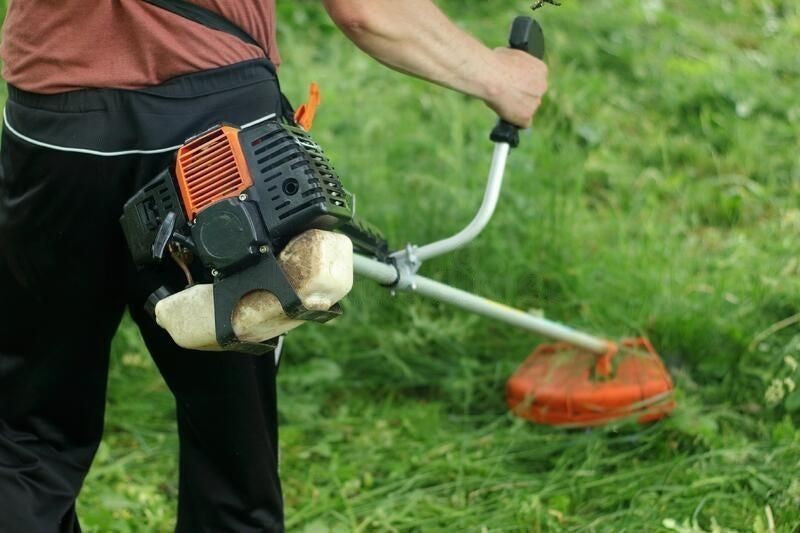
Design And Types Of Brush Cutters
Agricultural tools are an efficient way to ease the farming process. Various agricultural tools help the farmers to help them in their farming activities and minimize their workloads.
One such effective agricultural tool is the brush cutter. A brush cutter is an agricultural tool that helps to cut down the weeds, harvest crops, and trim the grasses or trees and other foliage.
It is very effective to cut through the overgrown part of agricultural produce and other hard parts of tress
How is a brush cutter designed?
Brush cutters have a very specific region that is crafted with precision. That is, you should begin cutting the grass in a specified direction. Slowly insert the blade into the plants, pressing the head against the material. If you trim plants with a chopping action, the machine may be damaged and stop working.
Brush cutters are particularly successful at cutting through overgrown brush, clogged brush, and hard parts of trees that larger machines can't reach.
Brush cutters come with a variety of blade attachments that can be used to cut a variety of materials. In any case, the life of the blade is determined by what you're cutting and how often. For example, if you're cutting through hard branches or stems as often as feasible in difficult zones, you may need to change or sharpen the cutting blades every day.
A brush cutter is made up of an engine that is mounted near the body and a pole with a driveshaft that transmits power to a rotary cutting head at the opposite end of the pole. Brush cutters also include brush cutter blades, trimmer heads, brush cutter shafts, and handles.
Different types of Brush Cutters
- Handled
This is the smallest of the three categories. They're ideal for cutting saplings, grass, and overgrown weeds because they feature longer lines, larger engines, and metal brushes. There are 2-cycle and 4-cycle engines available. You can select any of them based on your preference for blending gas and oil.
- Walk-behind
If you have limited time to manage massive projects, this is the tool for you. The hand-held brush cutter is ideal for dealing with tiny areas of work. A walk-behind brush cutter, on the other hand, is ideal for larger regions and overgrown brush. These brush cutters are ideal for trimming a vacant plot of land or an underutilized property area.
- Backpack Brush Cutters
One of the major advantages of these brush cutters is the backpack option, which allows for more comfortable traveling. Aside from that, these brush cutters conduct basic farm tasks, such as cutting in flat regions where large grasses and weeds need to be managed. However, these are not suited for sloppy soils because the brush cutter's weight and gravity propel the body forward, potentially resulting in falls.
- Loop handle brush cutters
This type of brush cutter is ideal for field chores involving enormous weed bushes, long trees that need trimming, and a variety of other hidden objects such as boulders. These are ideal for steep slopes and pruning above the head level.
Tips to safely use brush cutters
We recommend that you read the product handbook thoroughly before using the brush cutter. Also, make sure to stick to all safety regulations.
When using a brush cutter, make sure you use a hard hat, eye protection, and hearing protection.
When it comes to attire, padded gloves, long pants, and boots are recommended. It is suggested that you keep your youngsters away from the work area.
Advantages of a Brush Cutter
- Powerful
Brush cutters are a powerful agricultural tool that makes the agricultural work east. Brush cutters are motorized or highly driven with the engine capacity load that reduces or minimizes the efforts of the farmer and provide an efficient working environment.
They can also cut in places that larger machines can't get to. However, most brush cutters are inconvenient to use, and if you must clear a wide area, you may become fatigued. To prevent operator fatigue, most brush cutters incorporate a straight shaft and anti-vibration features. A harness also aids in machine control and lightens the load while you operate.
- Versatility
Brush cutters come with a variety of blade attachments that allow you to narrow a variety of materials. They are sometimes sturdy and dependable machinery if they are properly maintained. However, the blade life is determined by what you're cutting and how often you're cutting it. If you labour in rocky areas or cut through hard stems or branches frequently, you may need to exchange or sharpen the blade daily. You should check the blade sharpness before each usage because working with a dull blade reduces service life and poses a security risk.
- Convenience
The brush cutter is a handy power tool for all your garden and forestry work because of its mix of power, durability, and versatility. You can easily remove any vegetation from your garden. Brush cutters are particularly useful since they can get into tight spaces in your yard. Lawnmowers frequently struggle to reach locations or navigate difficult terrain.
How to sharpen the blade of the brush cutters?
Blades grow dull over time due to normal wear and tear, resulting in poor weeding, tapering, and mowing. This does not, however, imply that you must replace it. The blades may easily be sharpened at home without spending any money.
Wear protective equipment and make sure the item is not plugged in or switched on when sharpening. To sharpen the brush cutter, follow the instructions below...
- Wash your blade in warm soapy water first.
- Line up your sharpening tool and angle the blade.
- Make sure the stone is dragged across the blade.
